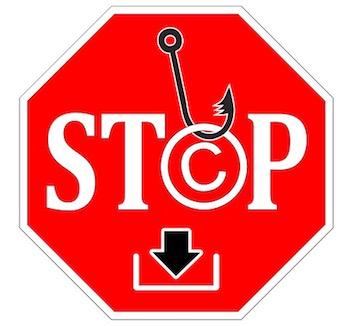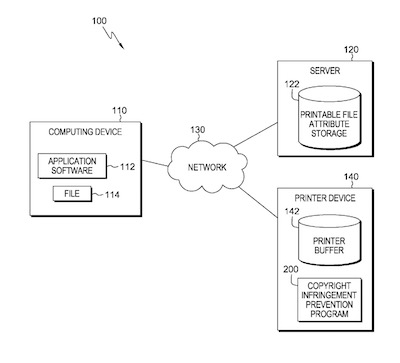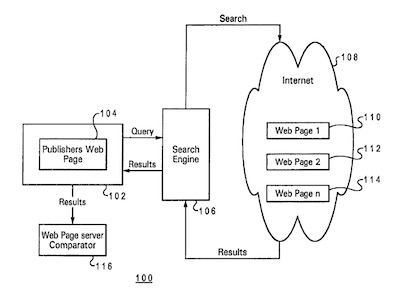 Although the type of copyright infringement that gets the most attention today in our digital age is the downloading of music and/or movies, infringement of print and picture medium (such as photographs) is also punishable under the Copyright Act, and are a very real problem for publishers and photographers alike. Indeed, copyright infringement is an unfortunate reality for all content creators and publishers given how easy it is in the 21st century to cut, paste, download and send, all without thinking about the harm that will be done to the creator, author or artist.
Although the type of copyright infringement that gets the most attention today in our digital age is the downloading of music and/or movies, infringement of print and picture medium (such as photographs) is also punishable under the Copyright Act, and are a very real problem for publishers and photographers alike. Indeed, copyright infringement is an unfortunate reality for all content creators and publishers given how easy it is in the 21st century to cut, paste, download and send, all without thinking about the harm that will be done to the creator, author or artist.
In early June, American photographer, Richard Prince, who has faced many copyright lawsuits in recent years, faced a new suit alleging that he engaged in wide spread self promotion of a subject image as a part of an art exhibit taking place in Long Island during 2011. Also in early June reports out of Houston and Fargo, N.D., indicate that architects in those cities have filed suits for the illegal distribution of architectural blueprints, which are copyrightable (see 17 U.S.C. 102(a)(8)) . Even presumptive Republican Presidential nominee Donald Trump has faced copyright allegations in recent days over a photograph of a bald eagle incorporated into campaign merchandise. Copyright infringement is a constant problem even for IPWatchdog.com, with even those within the intellectual property industry frequently copying articles and forwarding them around in e-mails as if no copyright could possibly apply to something published on the Internet.
While there may not be technological solutions on the immediate horizon for all content creators, there are some powerhouse innovators working on solutions to copyright infringement of printed media.
Copyright infringement involving printed material, whether willful or as the result of ignorance, would be stopped well before the lawsuit phase if IBM (NYSE:IBM) has anything to say about it. This May, the U.S. Patent and Trademark Office published an IBM patent application that would protect a method to prevent printers from printing copyrighted material. U.S. Patent Application 20160132897, which is titled Copyright Infringement Prevention, would protect a method involving computer processors that identify potential copyrighted material in a file for printing. To do this, the computer sorts through the file for text, images, and formatting that would notify the computer that the file it is holding is copyrighted. Images such as ISBN numbers will be run through the system and after completing its scan, will determine whether the file is printable or not.
This is not the only anti-piracy patent that IBM has acquired. In fact, U.S. Patent No. 9208452, entitled Digital Rights Management for Publishing Scanned Documents on the Internet, was filed for back in 2006 and can be seen as a precursor of the aforementioned printer innovation. In this technology it would be impossible to download a file that holds any marks of copyright and thereby making the file unreadable for the infringer. It does this using a table of algorithms in the computer’s memory that determines if the document is in the public domain or not.
Perhaps the innovation that resounds the most, however, is found in U.S. Patent No. 7,363,277, titled Detecting Copyright Violation via Streamed Extraction and Signature Analysis in a Method, System and Program. Issued in 2008 on an application filed over 8 years earlier, this program would analyze the amount of streamed data that s downloaded byte by byte during a search engine’s search. It would then be cut up into segments and assigned an electronic signature. By matching each of these signatures with possible infringed signatures, the program acts as an analysis of the search engine’s scope in terms of online piracy. If a signature is matched to a previously determined infringement, the file is then saved and displayed. This would make things easier to catch copyright infringers and thereby stop the trickle of profits from genuine sales from becoming a flood.
Given the ease with which copyright infringement can and does occur in the digital era perhaps these inventions, or the inventions they will doubtless inspire, will become an answer to the growing problem of copyright infringement.

![[IPWatchdog Logo]](https://ipwatchdog.com/wp-content/themes/IPWatchdog%20-%202023/assets/images/temp/logo-small@2x.png)




![[Advertisement]](https://ipwatchdog.com/wp-content/uploads/2024/04/UnitedLex-May-2-2024-sidebar-700x500-1.jpg)
![[Advertisement]](https://ipwatchdog.com/wp-content/uploads/2024/04/Artificial-Intelligence-2024-REPLAY-sidebar-700x500-corrected.jpg)
![[Advertisement]](https://ipwatchdog.com/wp-content/uploads/2024/04/Patent-Litigation-Masters-2024-sidebar-700x500-1.jpg)

![[Advertisement]](https://ipwatchdog.com/wp-content/uploads/2021/12/WEBINAR-336-x-280-px.png)
![[Advertisement]](https://ipwatchdog.com/wp-content/uploads/2021/12/2021-Patent-Practice-on-Demand-recorded-Feb-2021-336-x-280.jpg)
![[Advertisement]](https://ipwatchdog.com/wp-content/uploads/2021/12/Ad-4-The-Invent-Patent-System™.png)






Join the Discussion
2 comments so far.
Anon
July 10, 2016 01:19 pmBenny,
I think here we may be in closer accord on this issue.
It is a pet peeve of mine for people who have legitimate claims to copyright protection to act as if ALL copying is de facto illegal.
It is just not so.
I have a real problem with the extension of copyright protections (including any “lock” systems) that on an automatic basis prevent any and all copying. Copyright protection just does NOT extend that far.
Yes, I do realize that with the era of digital goods, that ANY (even legitimate) copy may result in a perfectly identical good, and that perfectly identical copy may in fact be capable of being “let loose” into the stream of commerce where the ease of additional copies (some legitimate and clearly some not) can occur in an completely UNcontrolled manner.
But that is NOT a reason to prevent what by right is the legitimate copies from being made.
That instead is a nascent problem with old world business structures. I bristle at the thought that I (or anyone) having legitimate rights to make a copy must have those rights constrained in order to satisfy some old business model.
Benny
July 10, 2016 02:05 amAn obvious flaw in the system described in the IBM application is that it will prevent legitimate copying or printing of copyrighted material, for example when payment has been made, or permission granted, for use of the material.
A second problem is that if this technology is installed only on printers offered by certain manufacturers, and owners perceive this feature as limiting the usefulness of the printer, they will prefer to purchase printers from other manufacturers.